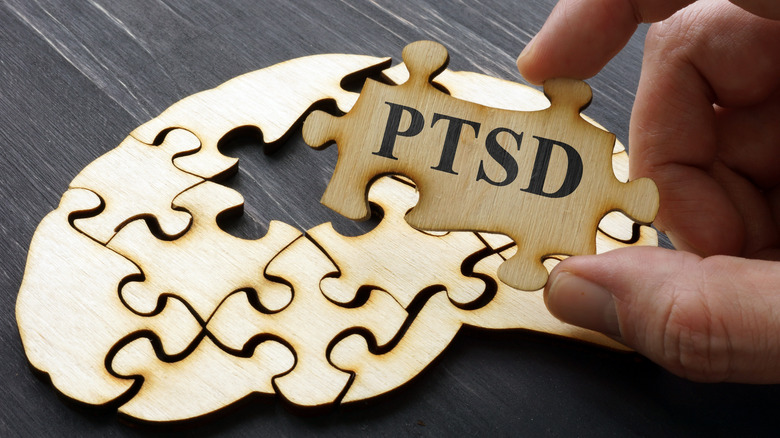Fight-or-flight is an automatic defense mechanism developed by our ancient ancestors (via Journal of Experimental Biology). This instinct evolved as a way for animals and humans to rapidly react to a threat, prompting them to either fight or run away. These behaviors make sense from an evolutionary perspective (via Discover Magazine). Life-threatening situations were prevalent in prehistoric times.
However, fight and flight remain common physiological responses in modern humans today. There may be times when we’re perfectly safe, yet our inbuilt alarm system flags up a potential emotional or physical danger, activating our primal survival instincts. This tends to manifest as hypervigilance or anxiety – and trauma is often at the root.
The term “fight or flight” was first introduced by a physiologist in the 1920s, per a paper published in the Journal of Behavior Therapy and Experimental Psychiatry. Many years later, “freeze” was identified as another involuntary response to feeling unsafe. More recently, the fawn response was proposed by therapist Pete Walker as a fourth possible coping mechanism for trauma survivors.
What is a trauma response?

People who have been exposed to a stressful or traumatic event can show a wide range of coping behaviors when they feel unsafe (via Dialogues in Clinical Neuroscience). The most recognized trauma response is fight-or-flight. When an individual recalls trauma or feels threatened, they may revert to the near-instantaneous survival reaction that was once used by their ancestors.
However, an overactive trauma response means that some people respond this way to everyday situations, which their minds mistakenly interpret as dangerous, notes Healthline. This is prevalent among those with post-traumatic stress disorder (PTSD) but a trauma response can also develop in people who have experienced smaller traumas, writes psychologist Elyssa Barbash in an article for Psychology Today. A threat doesn’t always have to be intense and life-endangering to have significant and lasting negative effects — it may also include distressing situations that weren’t emotionally resolved or processed and left us feeling helpless, like a painful breakup, the loss of a job, or financial woes.
The four main types of trauma responses

People who are reflexively wired to respond to trauma with a “fight” reaction are typically aggressive and hostile, according to therapist Pete Walker. They unconsciously believe that power and control can help create a sense of acceptance, love, and safety. The “flight” response, on the other hand, involves escaping or avoiding painful or stressful situations. These individuals are prone to addiction and workaholism and tend to steer clear of conflict. Their coping mechanisms stem from the belief that perfection will bring them love and safety.
“Freeze” types handle pain or stress by isolating themselves, mentally checking out, or seeking comfort in fantasy, explains Walker. They often feel stuck and have a hard time moving forward. They’re driven by the unconscious belief that safety lies in solitude. “Fawn” is the fourth trauma response identified by Walker. This is when a person attempts to avoid conflict and escape harm by pleasing and pacifying others. As children, they learn to cope with feeling helpless by meeting other people’s demands and needs, often at the expense of their own boundaries.
An individual may have one dominant trauma response depending on their personality and experiences, but few people exclusively employ one single coping strategy, says Walker. Most trauma survivors have a hybrid of the four different types of responses.
Coping with the effects of trauma

Photographee.eu/Shutterstock
We’ve all experienced the sensation of “fight-or-flight” at some point during our lives, but repeated activation of stress systems is likely to take its toll on the body in the long run, notes the American Psychological Association. Equally, chronically pleasing others or avoiding problems as a way to handle stress can also be detrimental to our wellbeing.
Identifying your trauma responses and triggers are empowering steps towards restoring emotional stability. Seeking the support of a therapist can help you break the cycle of your go-to trauma response, learn more effective ways of coping, and work through unresolved issues. There are a number of interventions and tools for people who’ve been affected by trauma, per Talkspace. These include medication, cognitive behavioral therapy (CBT), EMDR, and breathwork.
If you notice yourself gravitating towards trauma responses, Mindbodygreen suggests taking a moment to slow down and connect with your thoughts, feelings, sensations, and behaviors. Stepping back to observe what’s going on — rather than acting on autopilot — can help us challenge and change our automatic responses.




